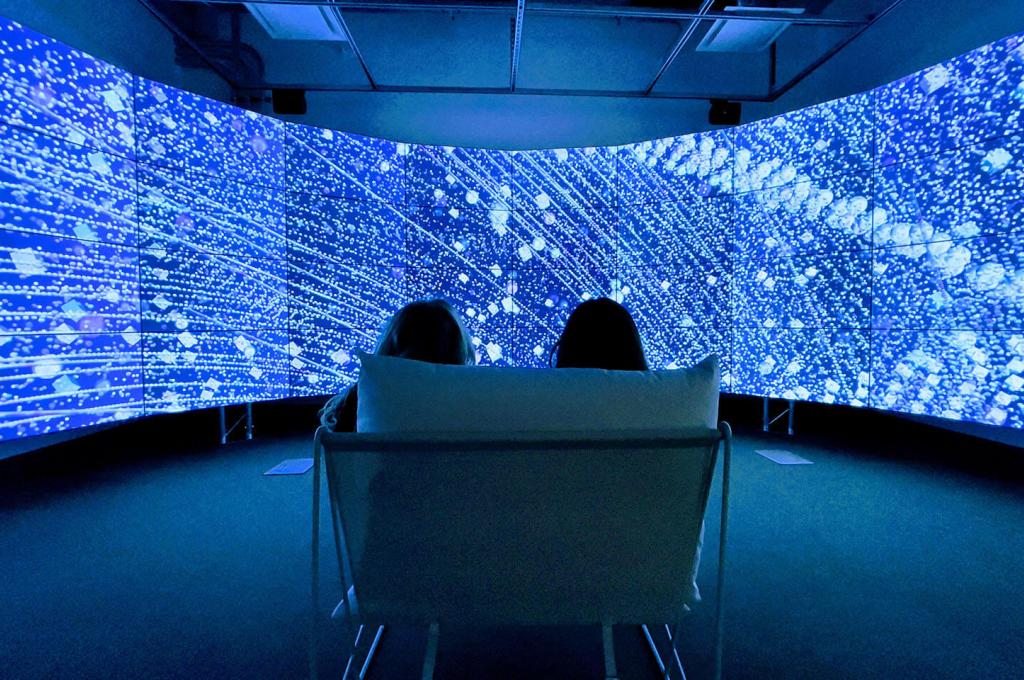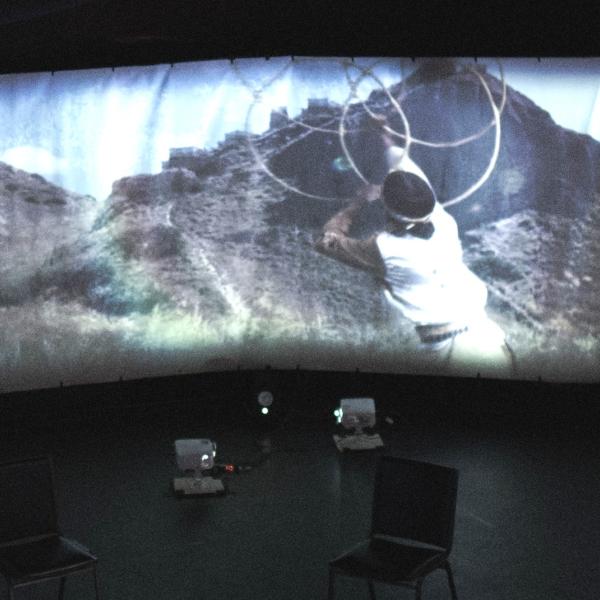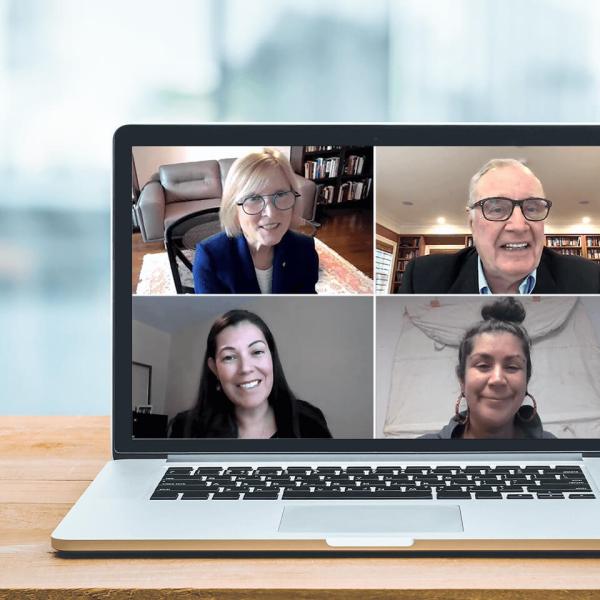A mountain of scientific data reveals the world is facing massive changes — from climate change to the colonization of space. But bombarding people with those numbers can make their eyes glaze over.
“We become overwhelmed with it. And then we start to just ignore it,” says Megan Smith, a media studies professor at the University of British Columbia (UBC). “I’m trying to change that narrative a little bit.”
Today, Smith is bringing data to life in new ways at her CFI-funded Critical Future Studio/Lab. Based at UBC’s Okanagan campus, the facility merges computer science, fine arts and engineering to create art installations that grab attention, visualize complex information and spark conversations about important issues.
“We’re a visual culture,” Smith explains. “I'm trying to flip the way that we communicate good data … and make it colourful, exciting, evocative, emotional.”
Sparking conversations about space junk
Take the example of the tens of thousands of satellites circling the planet every day. For Smith, it raises all kinds of issues, from government surveillance to the environmental impacts of space junk. But most people don’t give those distant specks of light a second thought.
To kickstart discussions, Smith embarked on a four-year collaboration with her then-PhD student Gao Yujie to create an immersive — and highly Instagrammable — experience. In April 2022, they unveiled All the Stars We Cannot See at UBC Okanagan’s Visualization and Emerging Media Studio.
The space features a towering curved video wall of 40 screens that immerse visitors in a 270-degree panoramic view. Drawing on data from the satellite-tracking website N2YO.com, those screens visualize the position and movement of approximately 26,000 active satellites in real time.
However, Smith and Gao didn’t want to simply show the satellites. They also wanted to create transformative experiences for audiences. So they programmed the exhibit to be as interactive as possible. “People can immerse themselves in that space and experience time and space in a different way,” says Gao.
Visitors can manipulate camera angles and adjust the size, shape and speed of the satellite renderings. They can view satellites in real time or select a specific time range to see how traffic patterns have changed.
They can also filter the satellites by their type to reveal the number of military satellites in the sky, for example, or the huge increase in SpaceX’s Starlink internet satellites, which now total more than 5,000.
The installation created all kinds of “wow moments,” according to Gao. The first day they launched it on campus, one person came in, took a photo and shared it on social media. Soon, more than a hundred people showed up.
“They were all taking pictures, and they were all saying, ‘what is this?’” Smith recalls. “If I helped to bring that conversation home to anyone's dinner table that night, I feel like I've achieved a little bit more active communication on a critical subject.”
At the end of October 2023, All the Stars We Cannot See moved off campus to the Kelowna Art Gallery, which will host the exhibit for four months before it starts to tour.
Leveraging the power of augmented reality
It’s not the only innovative way Smith is leveraging technology. For example, the RCMP recruited her to design VR remote controls that mimic the shape and feel of tasers and pepper spray canisters to make their virtual training environments as authentic as possible.
And in her latest project, Smith is feeding climate data from the Government of Canada into ChatGPT and then outputting the images using MidJourney, an AI image visualizer. Tentatively called “Walking in the Cold,” the virtual reality experience will transport users to Northern Canada in the year 2054 to visualize how climate change could alter what life may look like there.
“We're using real data to build predictions, and those predictions are quite dramatic,” she says. Her goal is to create an immersive experience that helps users connect with the issue on a more personal level. “The Walking in the Cold project is really about trying to enable more people to be able to see that space and walk in that space, so that they can feel an emotional connection with it and can relate to an environment that is dramatically changing,” Smith explains.

Using high-tech infrastructure to tell crucial stories

Smith credits the CFI with making much of this possible, funding powerful computers, audio-visual resources, a high-tech performance space and more. “It is a huge amount of equipment that enables my lab to experiment and tell new stories,” she says. “CFI has been a game changer.”
According to Smith, that infrastructure also paved the way to her receiving a Killam Accelerator Research Fellowship in 2022 — a prestigious prize that will help springboard her research even further. “It's really starting to get momentum now, and that’s thrilling,” she says.
CFI has been a game changer. Because of it, I can tell these critical stories.”
— Megan Smith, University of British Columbia







